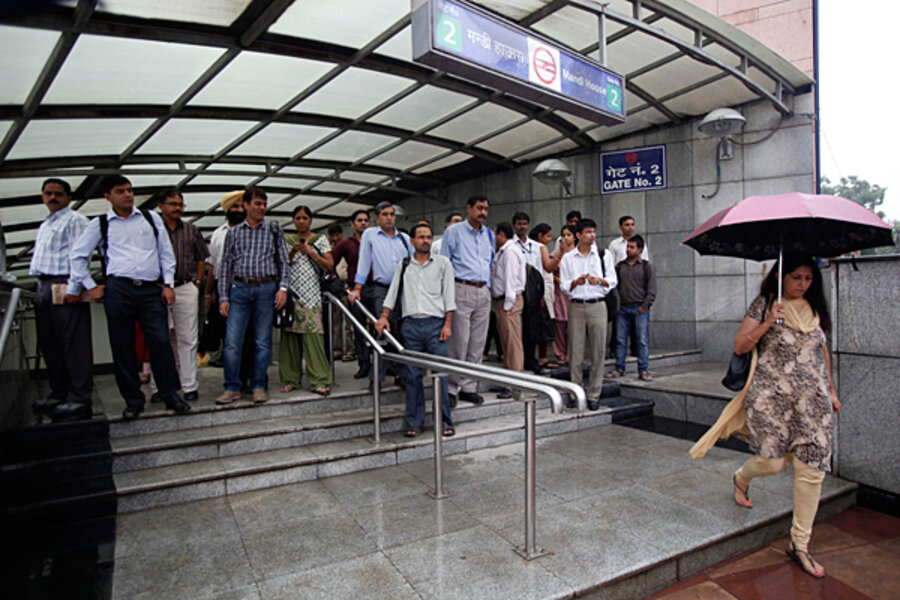Power restored in India after world's worst blackout, cause unclear
Loading...
| New Delhi
Factories and workshops across India were up and running Wednesday after major electrical grid collapse caused the world's two worst power blackouts.
An estimated 620 million people lost state-provided electricity when India's northern, eastern and northeastern grids failed Tuesday afternoon. It followed Monday's failure of the northern grid, which left 370 million people powerless.
Electricity workers struggled throughout the day Tuesday to return power to the 20 affected states, restoring most of the system within hours of the failure. India's new Power Minister Veerappa Moily told reporters that by Wednesday morning power had been fully restored across the country.
IN PICTURES: India Power Outage
Moily, who took over the top power ministry position Tuesday, said an investigation had begun and he did not want to point fingers or speculate about the cause.
Other officials said the blackout might have been the result of states drawing too much power from the grid. Some analysts dismissed that explanation, saying if that was the cause, such collapses would happen all the time.
The top elected official from Uttar Pradesh, India's largest state, denied that excess power drawn by his state had put the northern grid under stress.
"Uttar Pradesh has no role in the grid failure. My state is not drawing more electricity than its allotted quota," Chief Minister Akhilesh Yadav told reporters.
Moily warned states to stick to a disciplined withdrawal of power. "If they overdraw, this is the result. They can see for themselves. The entire grid will go black."
The Confederation of Indian Industry said the two outages cost business hundreds of millions of dollars, though they did not affect the financial center of Mumbai and the global outsourcing powerhouses of Bangalore and Hyderabad in the south.
Like many, the group demanded the widespread reform of India's power sector, which has been unable to keep up with the soaring demand for electricity as the economy has expanded and Indians grow more affluent and energy hungry.
The power minister cautioned that the power crisis has no quick solution, saying the government was looking at immediate and longer-term measures to address power scarcity.
Part of the problem is that India relies on coal for more than half its power generation and the coal supply is controlled by a state near-monopoly that is widely considered a shambles.
A recent survey showed nearly all the coal-fueled plants had less than seven days of coal stock, a critical level, and many of the country's power plants were running below capacity, according to Samiran Chakraborty, head of research at Standard Chartered, a financial services company. Government bureaucracy has made it difficult to bring more plants online.
In addition, vast amounts of power bleeds out of India's antiquated distribution system or is pirated through unauthorized wiring. Farmers, with a guarantee of free electricity that is driving many state electric boards to bankruptcy, have no incentive to conserve energy.
The power deficit was worsened this year by a weak monsoon that lowered hydroelectric generation, spurred farmers to use pumps to irrigate their fields long after the rains would normally have come, and kept temperatures higher, keeping air conditioners and fans running longer.
The government faced criticism for promoting Sushil Kumar Shinde from power minister to home minister in the middle of the day Tuesday, even as the outages continued. The promotion had been planned as part of a Cabinet reshuffle by Prime Minister Manmohan Singh.
The Times of India newspaper said moving Shinde "is like changing the captain of the Titanic when it's reeling after hitting a giant iceberg."
Shinde, whatever his blame for the outage might be, at least would have more experience to deal with the fallout than a brand new minister, the paper said in a front-page editorial.
Both Indian outages were the world's largest by far. The next closest was a 2005 blackout that affected 100 million people in Indonesia.







